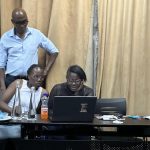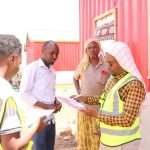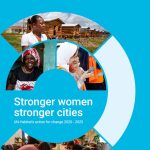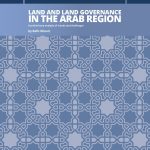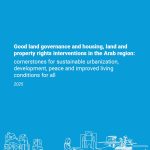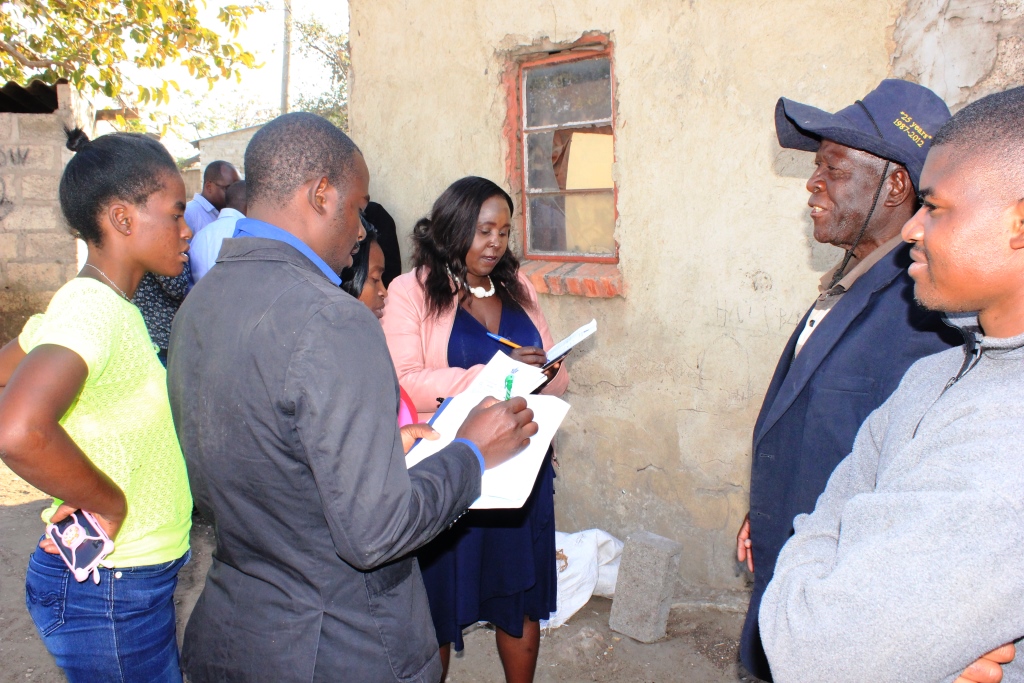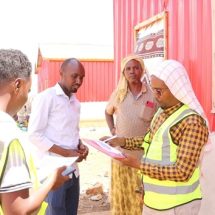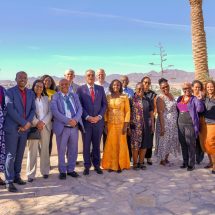The community learning centres established in four municipalities in Uganda in February 2015 are now the launching pads for the up scaling of usage of the Social Tenure Domain Model (STDM) to secure tenure for the urban poor in all 14 municipalities in the country. These four centres in Masaka, Entebbe, Tororo and Mbale, now fully kitted with modern information infrastructure such as computers, printers and cameras are facilitating the co-management of planning & land administration information between the local communities and the land professionals. STDM is a pro-poor, participatory and affordable land tool for representing a person-to-land relationship along the land rights continuum.
Thanks to the initiative, the slum dwellers in the four Municipalities have also been collaborating with their respective municipal councils to plan on how the informal settlements they live in should be upgraded. Through a participatory planning process, the voices of the local beneficiary communities now have a platform for expression of their interests during the processes of settlement profiling, mapping and enumeration surveys.
This inclusion has been instrumental in helping the communities to clearly understand their needs, priorities and capacities. Specifically, the profiling and enumeration carried out in Naluwerere (Tororo), Kigungu (Entebbe), Namboozo (Mbale) and Katafali (Masaka) has generated boundary maps, service maps and community proposal maps that are now being used to inform planning in these settlements besides supporting decision-making for the Uganda Support to Municipal Infrastructural Development (USMID) program funded under the World Bank support to Uganda.
Today, these communities are in a better position to meaningfully engage with their municipal council leaders in developing realistic slum upgrading plans for the benefit of the 11,000 people living in the 2,940 households within the informal settlements. The communities are now more confident that their voices are now being heard in the planning & transformation of their settlements and towns.
This is unlike the past experiences from Mbale when STDM was first implemented where the communities felt extorted and exploited to give information in development programs just as a formality. “STDM has helped in bridging the gap between the Mbale Municipality community in voicing their issues as it regards inclusive planning and using the data in a broader aspect be it informal or formal settlements,” said Daniel Waniola, a community leader in Mbale.
Through this project, municipal and settlement forums have now been established to facilitate community participation. These mechanisms now serve as a platform where the community can now discuss development needs within their settlements and generate solutions while holding the responsible parties accountable for their actions. In Entebbe for instance, the Municipal Development Forum (MDF) discussed the expansion of the Entebbe International Airport and how this would potentially result in the eviction of the people of Kigungu.
Using this new platform, the physical planner of Entebbe Municipality shared the airport expansion plans and reassured the residents of Kigungu that their community would not face any eviction. As the STDM tool embraces participatory planning, the communities are now better able to clearly identify deficiencies in service delivery in their informal settlements.
As this project has been appropriately titled, the development of mutually beneficial partnerships has been central to the delivery of outputs for this and other land tenure security interventions implemented by GLTN. Partnerships between the slum dwellers, non-governmental organizations and the government have guided the planning and implementation of STDM activities in Naluwerere, Kigungu, Namboozo and Katafali. ACTogether Uganda and the Institute of Survey and Land Management (ISLM) have even signed a Memorandum of Understanding that gives the latter a critical role in developing the capacity of the urban communities in the use and application of STDM for planning purposes.
The involvement of universities and academic institutions means that planning students can now work directly with the communities in the enumeration of surveys. Through this collaboration, the community members are better able to understand the dynamics of land ownership, particularly the importance of recognizing the continuum of land rights in land administration. As a result, the community now sees the benefits accrued and have set their focus on further establishing and strengthening partnerships with their respective local governments. The municipalities of Masaka, Entebbe, Tororo and Mbale are now more receptive to community solutions for identified problems.
The identification and adoption of the STDM as the appropriate tool for managing the challenges presented by uncoordinated urban growth has had an unprecedented influence in the local government processes. Since the municipal officials started being closely involved in the tool and their capacity was strengthened, there has been a positive paradigm shift in attitude towards planning and use of accurate data generated by the STDM Tool. This remarkable achievement has provided the space for institutionalization of STDM.
All the above achievements were made possible through the “Building a country wide partnership on Land Tenure Security in Uganda” project that was implemented by our partners Slum/Shack Dwellers International (SDI) through through local partners ACTogether Uganda and the National Slum Dwellers Federation of Uganda (NSDFU)

